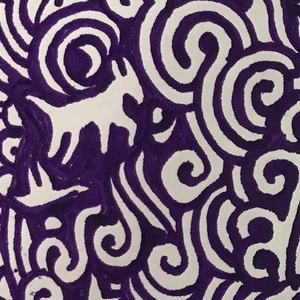
The Hobart Wooden Boat Festival is really worth the trip down to Tasmania. Unfortunately you have already missed it for this year (it was on from the 7th to the 10th of February 2025) and you will now have to wait until the 5th of February, 2027 to enjoy it again. Unfortunately, I missed it again this year, being approximately 14,000 kilometers away. Normally I wander around each day, thinking about the boats that I am going to build, but don't.
There is another making stuff event that is almost as good as the Wooden Boat Festival, and that is the Feria de Artesanias de Bogota which is a showcase of all the stuff that is still made-by-hand in Colombia. You have also missed it for this year, sorry (it was the 14th to the 17th of December, 2024).
One year I went to the ExpoArtesanias and hung around the weaving stand for the Kogi indigenous people, from the Sierra Nevada de Santa Marta who were demonstrating their weaving and making techniques. Its a pretty fascinating culture and if you are interested you can read more about it in the book The River by Wade Davis. Wade Davis is a pretty extraordinary fellow in his own right and a great lover of Colombia.
You have a reasonable chance of seeing Mr Davis and maybe even listening to him talk if you go to the Hay Festival in Cartagena de Indias also in Colombia. The Hay Festival in Cartagena is a books and writers festival and is apparently also pretty wonderful, although I have never actually been. You've also missed it for this year (it was 30th of January to 2nd of February, 2025).
Anyway, some of the Kogi people at ExpoArtesanias were kind enough to try to teach me some of their weaving techniques, very patiently I must say. They weave and make most of their everyday clothing items, such as ponchos, or “ruanas", a white fez-style hat which is so tightly woven that it can hold” water and the famous (in Colombia at least) “mochilas” (which is a single-strap bag woven out of wool or some plant fibre) among other things. They also make some extremely sturdy sandals with thick soles made from car tyres.
Some of the weaving techniques are not too complicated; the stitch for the body of the mochila bags is a fairly standard crochet stitch I believe. But the weaving for the strap for the mochila is a kind of cats-cradle puzzle which I was unable to master or remember despite the patient teaching of the Kogis.
At some point, I asked them “Who invented this weaving, or how did you learn it? ” and they replied: “We only learn things by looking at how the animals and insects do things. They are the ones who teach us” .
I liked that.